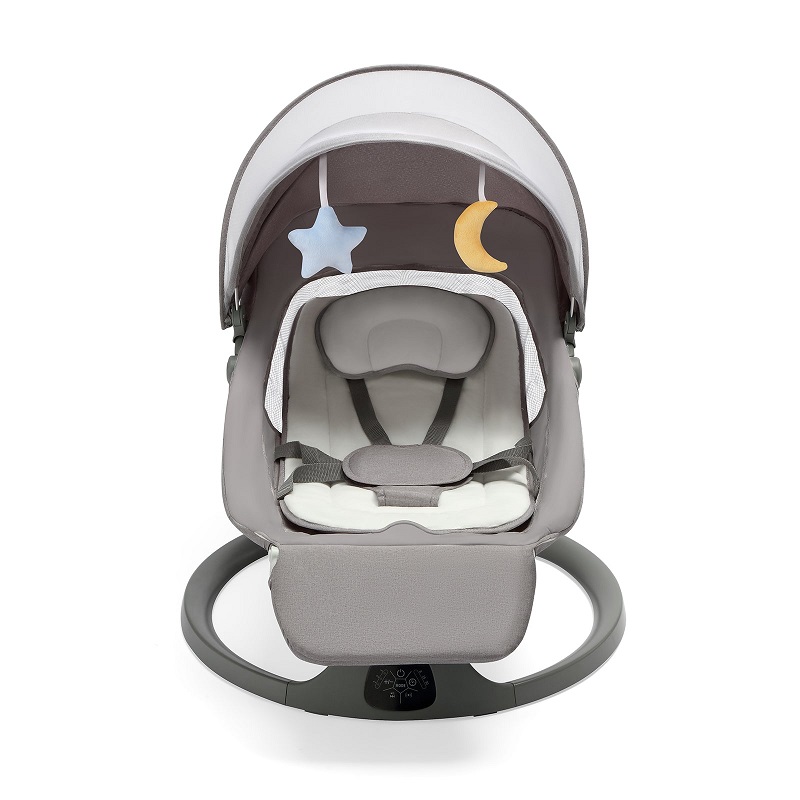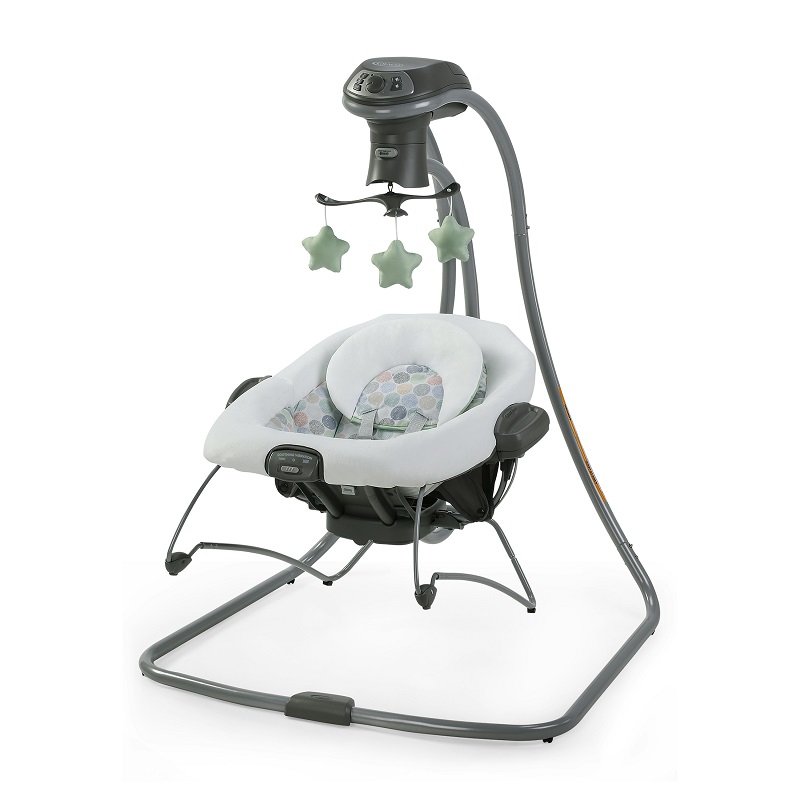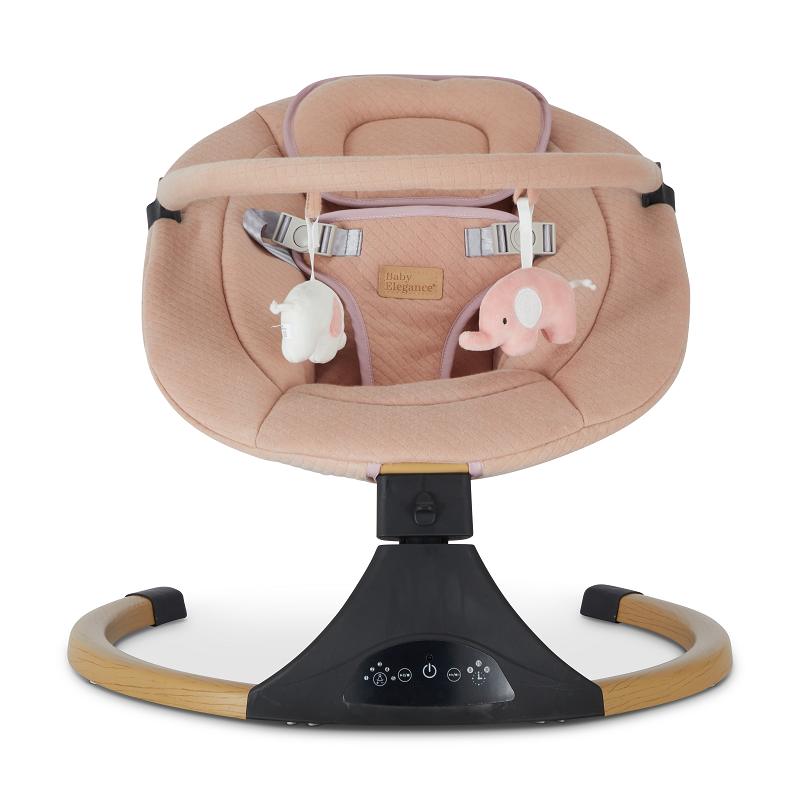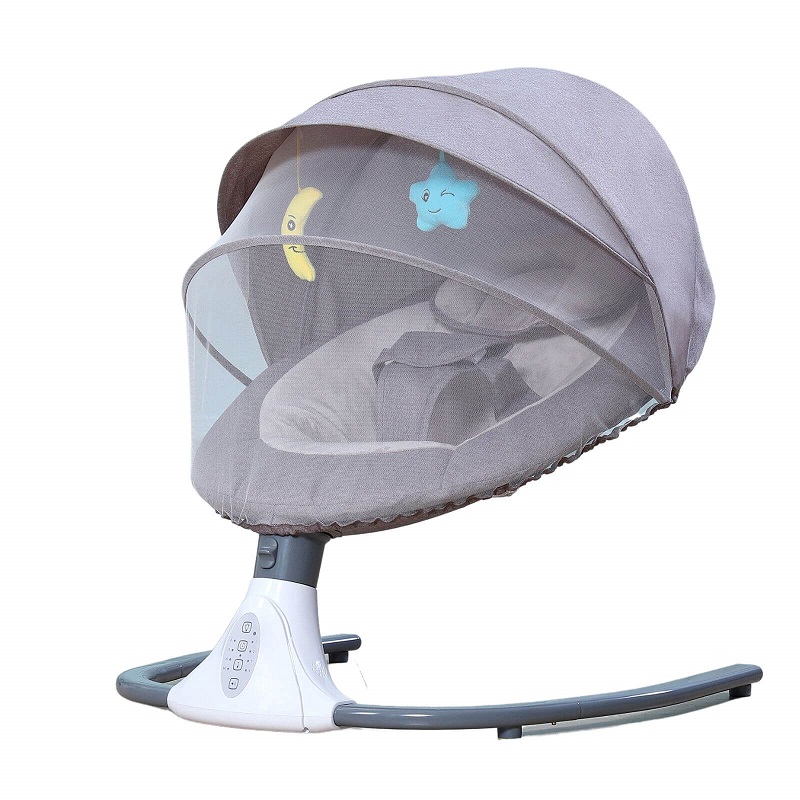Choosing the right baby gear can be a daunting task for new parents. Among the various options available, baby swing and bouncer are two popular choices for soothing and entertaining infants. Both offer unique benefits and features, but understanding their differences can help you make an informed decision. In this article, we’ll delve into the details of baby swings and bouncers, examining their pros and cons to determine which might be the best fit for your little one.
Understanding Baby Swings
What Is a Baby Swing?
A baby swing is a motorized device designed to gently rock an infant back and forth or side to side. The motion mimics the soothing movement a baby experiences in a parent’s arms or while being rocked in a stroller. Baby swings often come with various features, such as adjustable speeds, reclining seats, and built-in toys or mobiles. Some models even include music and nature sounds to further calm and engage your baby. Typically, a swing consists of a padded seat suspended from a frame, and the motor mechanism controls the swinging motion.
Benefits of Using a Baby Swing
Baby swings are renowned for their ability to calm and soothe babies. The rhythmic swinging motion can help mimic the sensations babies felt in the womb, promoting relaxation and aiding sleep. This can be particularly helpful for parents seeking a temporary respite or those dealing with a fussy baby. Swings can also provide a secure and comfortable place for babies to rest while parents attend to other tasks. Many swings offer multiple swinging motions and speed settings, allowing parents to customize the experience to suit their baby’s preferences.
Additionally, swings often come with features like adjustable recline positions, which can be beneficial for babies who need to be propped up slightly due to reflux or other issues. Many models also include interactive elements such as toy bars, mirrors, and music, which can help stimulate your baby’s senses and keep them entertained.

Considerations and Drawbacks
While baby swings offer numerous benefits, there are some considerations to keep in mind. One key drawback is their size and bulkiness. Swings can take up a significant amount of space, which might be challenging for smaller living areas. Additionally, the motorized nature of swings requires batteries or a power source, adding to the maintenance and operational costs.
Another important consideration is the duration of use. Most swings are designed for babies up to a certain weight limit or age, which means they may only be useful for a few months. Over-reliance on a swing can also lead to potential issues with a baby’s sleep patterns if used excessively. Therefore, it’s essential to use swings in moderation and ensure that your baby also spends time in other positions, such as tummy time and supervised play.
Exploring Baby Bouncers
What Is a Baby Bouncer?
A baby bouncer, also known as a bouncy seat, is a simpler device compared to a swing. It typically consists of a seat with a spring mechanism that allows the baby to bounce gently with their own movements. Many bouncers come with a frame that can be placed on the floor or be attached to a stand. Unlike swings, bouncers do not have motorized movements and rely on the baby’s natural movements to create the bouncing effect. Bouncers are often lightweight and portable, making them easy to move around the house.
Benefits of Using a Baby Bouncer
Baby bouncers offer several advantages that can make them a valuable addition to your baby gear collection. One significant benefit is their portability and ease of use. Bouncers are generally more compact and lightweight than swings, making them easy to transport and store. This convenience allows parents to move the bouncer from room to room and keep their baby close by throughout the day.
The gentle bouncing motion of a bouncer can help soothe a baby and promote relaxation. Additionally, bouncers often come with interactive features such as toys, rattles, and mirrors that can engage and entertain your baby. The simplicity of bouncers also means they typically have fewer components and require less maintenance than swings.
Considerations and Drawbacks
Despite their benefits, baby bouncers also come with certain drawbacks. One of the main limitations is that bouncers rely on the baby’s own movements for the bouncing effect. This means they may not be as effective at calming a fussy baby compared to the consistent motion of a swing. Additionally, bouncers generally do not offer as many adjustable features or modes as swings, which can limit their versatility.
Another consideration is the support provided by the bouncer. While most bouncers offer adequate support for younger infants, older babies or those with special needs may require additional cushioning or support. It’s essential to ensure that the bouncer you choose provides proper neck and back support and meets safety standards.

Comparing Features: Swings vs. Bouncers
Motion and Adjustability
One of the most significant differences between baby swing and bouncers is the type of motion they offer. Swings provide a motorized, rhythmic swinging motion that can be adjusted in terms of speed and direction. This motion can be particularly soothing for babies and can help lull them to sleep. Swings often come with additional features such as adjustable recline positions and varying swinging patterns to cater to different preferences and needs.
In contrast, bouncers rely on the baby’s natural movements to create a bouncing effect. While this can be engaging and entertaining, it may not be as effective for calming a distressed baby. Bouncers generally have fewer adjustable features compared to swings, focusing more on providing a basic, supportive seat with added interactive elements.
Portability and Storage
When it comes to portability and storage, bouncers have a clear advantage. Their lightweight and compact design make them easy to move around the house and store when not in use. Bouncers are also more likely to be travel-friendly, allowing parents to bring them along on trips or visits.
Swings, on the other hand, tend to be bulkier and heavier. Their size and the need for a power source can make them less convenient for transport and storage. If space is a concern or if you need a portable solution, a bouncer might be the better option.
Cost and Maintenance
The cost of baby swings and bouncers can vary widely depending on the features and brands. Generally, swings tend to be more expensive due to their motorized components and additional features. Bouncers are usually more budget-friendly and have lower operational costs since they do not require batteries or electricity.
Maintenance for swings includes ensuring that the motor and other moving parts are functioning correctly and replacing batteries as needed. Bouncers typically require less maintenance, focusing primarily on keeping the seat clean and ensuring that the bouncing mechanism remains in good condition.

Safety Considerations
Safety is a critical factor when choosing between a baby swing and a bouncer. Modern baby swings are equipped with several safety features to ensure the well-being of your baby. These features often include a five-point harness system that secures the baby in place, preventing them from slipping or falling. Swings also typically have a sturdy frame and a stable base to prevent tipping.
It’s essential to follow the manufacturer’s guidelines regarding the weight and age limits for the swing. Overloading the swing or using it beyond its intended capacity can pose safety risks. Additionally, always use the swing on a flat surface and avoid placing it near any potential hazards.
Making the Right Choice for Your Baby
Factors to Consider
When deciding between a baby swing and a bouncer, consider several factors to determine which option best suits your family’s needs. Think about your living space and whether you have room for a larger swing or if a more compact bouncer would be more practical. Also, consider your baby’s preferences and needs. If your baby enjoys gentle, rhythmic motions and requires additional features for soothing, a swing might be the better choice. Conversely, if you need a portable, lightweight option that provides basic support and entertainment, a bouncer could be ideal.
Conclusion
Choosing between a baby swing and a bouncer ultimately depends on your individual preferences, living situation, and your baby’s needs. Both options offer unique benefits, from the soothing motion of a swing to the portability and simplicity of a bouncer. By considering the features, benefits, and drawbacks of each, you can make an informed decision that supports your baby’s comfort and development while fitting seamlessly into your daily routine.
